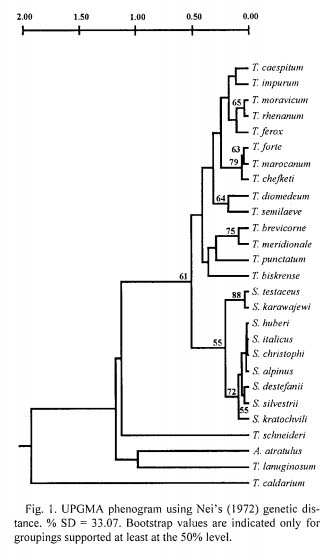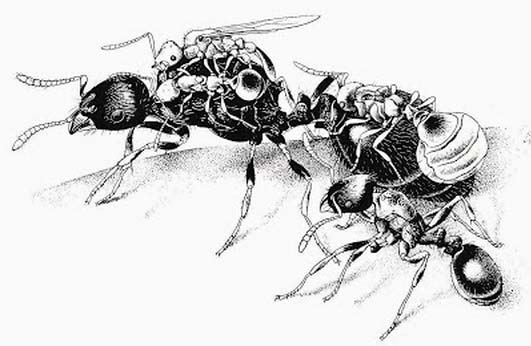Phenomenon of Slave-Making Behavior in Ants
Biology 342 Fall 2014
Emma Schweitzer & Rob Haas
| Home | Phylogeny | Ontogeny | Mechanism | Survival Value | References | Courses Home |
Phylogeny
Phylogeny is the evolutionary history examining the particular slave-making behavioral trait in ants, with focus on the interrelatedness of all life.
More on Dulosis
Dulosis is only found in two particular ant families from the New World, the Formicinae and Myrmincinae. Currently it is estimated that slave-driving in ants evolved a minimum of nine times independently within these two families, as there is such a behavioral gap between the certain kinds of slave-rearing behaviors they use. The small Myrmicinae tribe and the Formicoxenine ants have even evolved six different types of slave-making behaviors within each, that all fall along a different region along an aggression spectrum, with both species using equally aggressive and relaxed aggression inflicting slave rearing techniques.
The two major types of Dulosis are:
1.) Obligate Dulosis - These ants can only survive through enslaving other colonies of ants. Slavery and oppression is their medium of existence.
2.) Facultative Dulosis - These ants do often enslave other species of ants, but can survive without it.

Figure 1. Phylogenetic tree mapping out the relatedness of slave-making ants
Both types of dulosis are thought to be outgrowths of territorial aggression, and one group of ants, Teleutomyrmex ants, seem to depend on dulotic tactics more than other ants, like the P. americanus. There is a spectrum of parasitism in all the ant species we have discussed here, and many even show great a variation in scouting as well as the raiding behavior previously discussed. Teleutomyrmex queens have been observed to be much more enforcing and hostile towards enslaved ants from their host colonies. One of the Teleutomyrmex’s particularly interesting and more “macho” behaviors is seen when the queen ants attach themselves to a host queen and eat and enjoy the benefits of living like a queen while riding around attached to her back, Figure 2 below.

Figure 2. Teleutomyrmex queen ants riding their larger host queen ants.
Ant societies certainly are more complex than we can believe, with more research being done everyday. While ants have over evolutionary time developed such slave-driving parasitic relationships, it should also be noted that they have also developed mutualistic farming relationships as well. Ants are believed to have been farming for longer than humans, as some ants (Lasius Flavius and Myrmica genus ants) evolved to herd aphids in a mutualistic rather than parasitic fashion, relieving aphids of their excess abundance of sugars while providing protection (Find out more about these ants here!). We mention this behavior because although we focus on slave-making behaviors here, we want to also provide evidence for the scope of other relationship-type behaviors ants have evolved which are quite the opposite of slave-making.